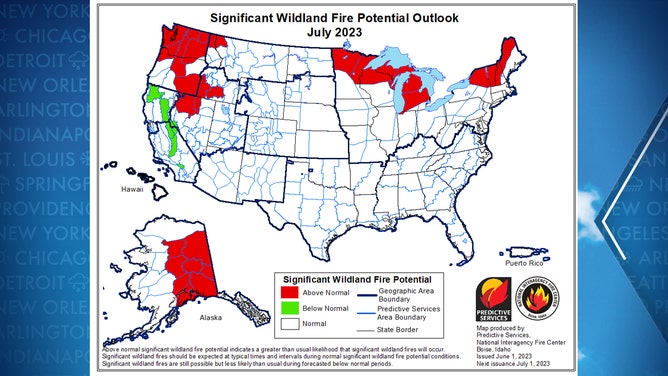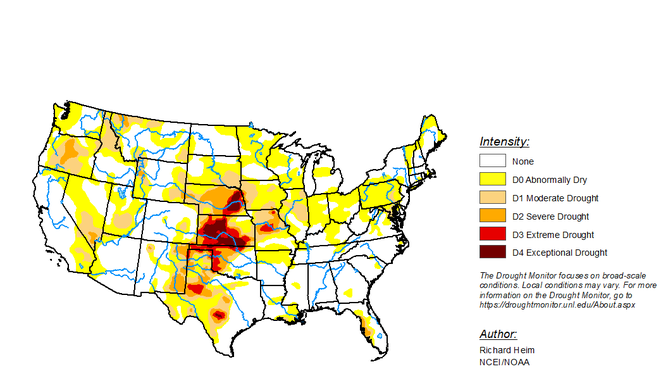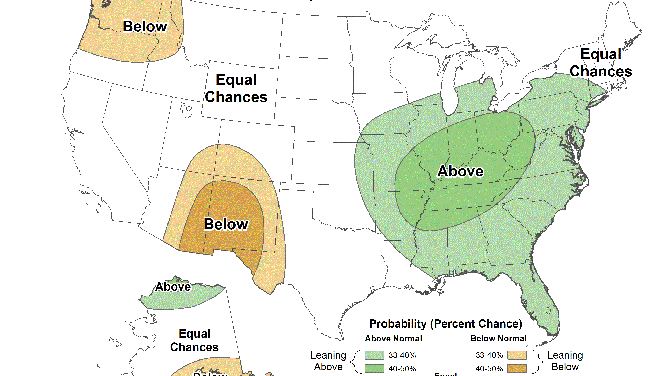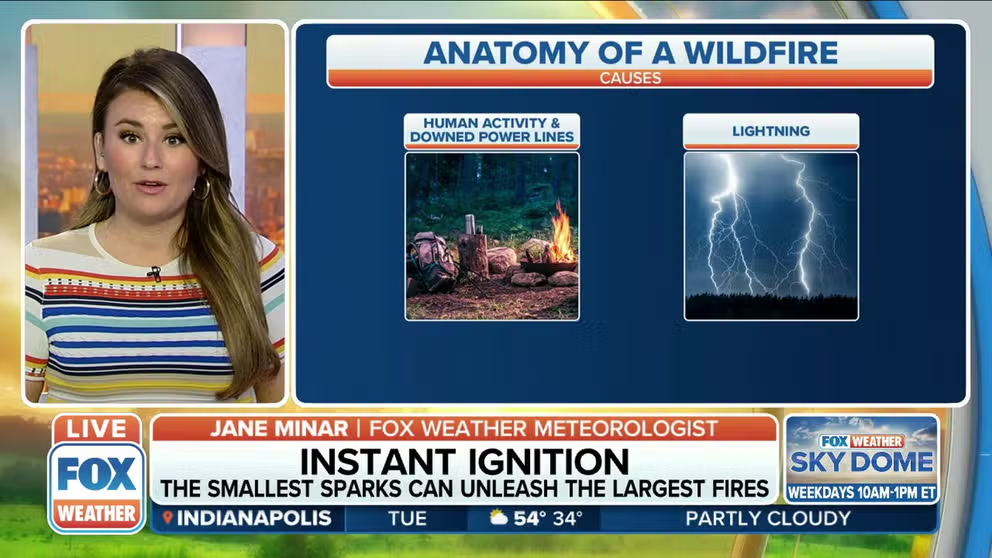Active fire season forecast for Pacific Northwest, Midwest while the Southwest gets a break
The National Interagency Fire Center released their Wildfire Potential forecast through September. The Desert Southwest finally gets break while the Great Lakes are in the red.
Anatomy of a wildfire: Smallest spark can unleash the largest fires
The anatomy of a wildfire. The smallest spark can unleash the largest fires. FOX Weather meteorologist Jane Minar explains.
After a quiet May for wildfires, the Wildland Fire Potential heats up into summer. The National Interagency Fire Center forecasts high fire activity across the Pacific Northwest, Great Lakes and upper Midwest as well as eastern Alaska. California and the Desert Southwest are forecast to get a break after a tough couple of seasons.

(Predictive Services, National Interagency Fire Center / FOX Weather)
Year-to-date, the U.S. has seen fire across only half the acres normally burned over a 10-year average. Even the number of fires is only at 82% of normal. The Drought Severity and Coverage Index is at its lowest since 2020, 74 on a scale of 500, down from a 10-year peak of 202 in November 2022, according to the center.
Almost 60% of the country is not in drought conditions, and less than 20% is under moderate to exceptional drought.
HERE'S WHEN THE SUNSHINE STATE'S RAINY SEASON GETS UNDERWAY

(US Drought Monitor / NOAA)
Across the West, though, late spring delivered warm temperatures leading to rapid snowmelt and increased vegetation which becomes fuel for fires. The Great Lakes, Midwest, Mississippi Valley and Northeast dried out with below-normal rainfall, leaving the areas in high threat.
The High Plains, Texas, the Southwest and the Southeast saw above-normal rainfall and are in good shape heading into wildfire season.
With NOAA's Climate Prediction Center calling for a warmer than normal West, South and East Coast. Paired with below normal chance of rain west of the Cascades, inland Oregon and Washington start the summer under above-average risk.
STATE FARM STOPS OFFERING HOME, PROPERTY INSURANCE IN CALIFORNIA AMID SKYROCKETING DISASTER RISKS

(Climate Prediction Center / NOAA)
The high risk creeps across the rangeland into Idaho, Nevada and Montana into August and likely through September.
Warm temperatures from the Midwest to the Northeast will dry out grasses and brush, leading to a higher fire risk through summer.
The expected below-normal monsoon season for the Southwest and Central Rockies will mean less water. But after the dousing parade of atmospheric river-fueled storms and the reduced risk of lightning setting off fires, wildfire risk continues below average.
The South stays at average risk despite the onset of El Niño, which generally tamps out tropical storm development in the Atlantic, meaning less rainfall.

(Climate Prediction Center / NOAA)
The Great Lakes stay dry with below-average expected rainfall, which keeps those states in high fire danger. That threat heads into the Northeast as summer continues.
The center calls for a slightly higher-than-average fire season across much of Alaska after heavy winter snows led to impressive snowpack, now snowmelt. The fire threat backs off later in summer.
